
by David Brandy | Apr 13, 2018 | Staff Picks, Stories
On this, the first day of spring, I pay homage to the Wonder of Winter.
At this point in the tropical year here in Canada, while I long for spring’s promise of hope eternal, my heart’s desire can be just as faithful to the frigid fallow and the embrace of winter’s rest and renewal.
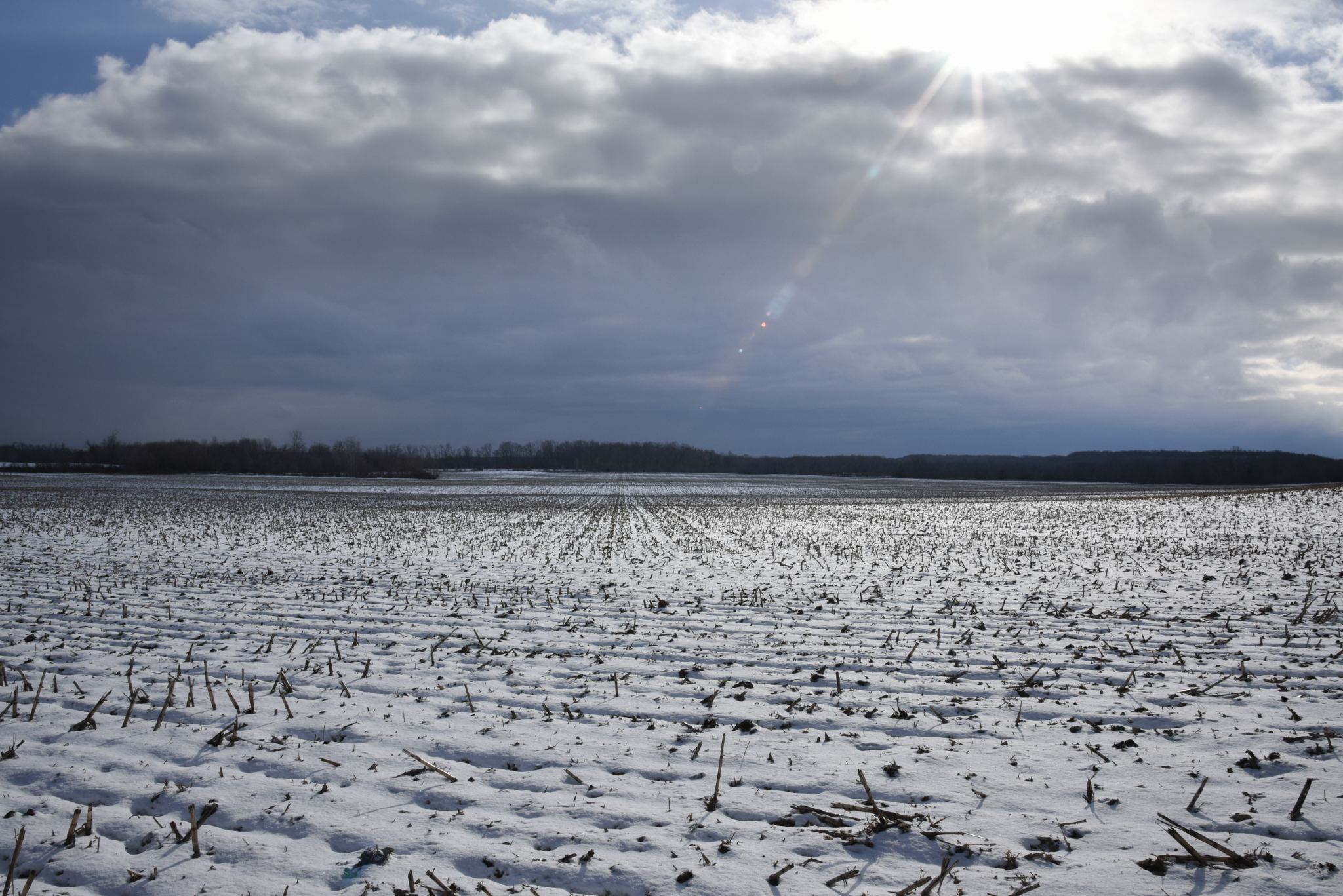
Whether urban or rural, chaotic or orderly in nature, as spring beckons I take this moment to reflect back on the moments of pure clear light and misty murkiness that presented to me during the winter of my discontent.
It’s easy to run out into the swelter of summer and focus my lens on the colour and bounty of Mother Nature with nothing more than t-shirt and shorts adorning my body.
It’s quite another thing to don a parka, heavy boots, a hat and thick gloves and try to focus that same lens on the permeating permafrost.
So I dig deep, unafraid of the cold unknown, allowing the full extent of expression to come forth.
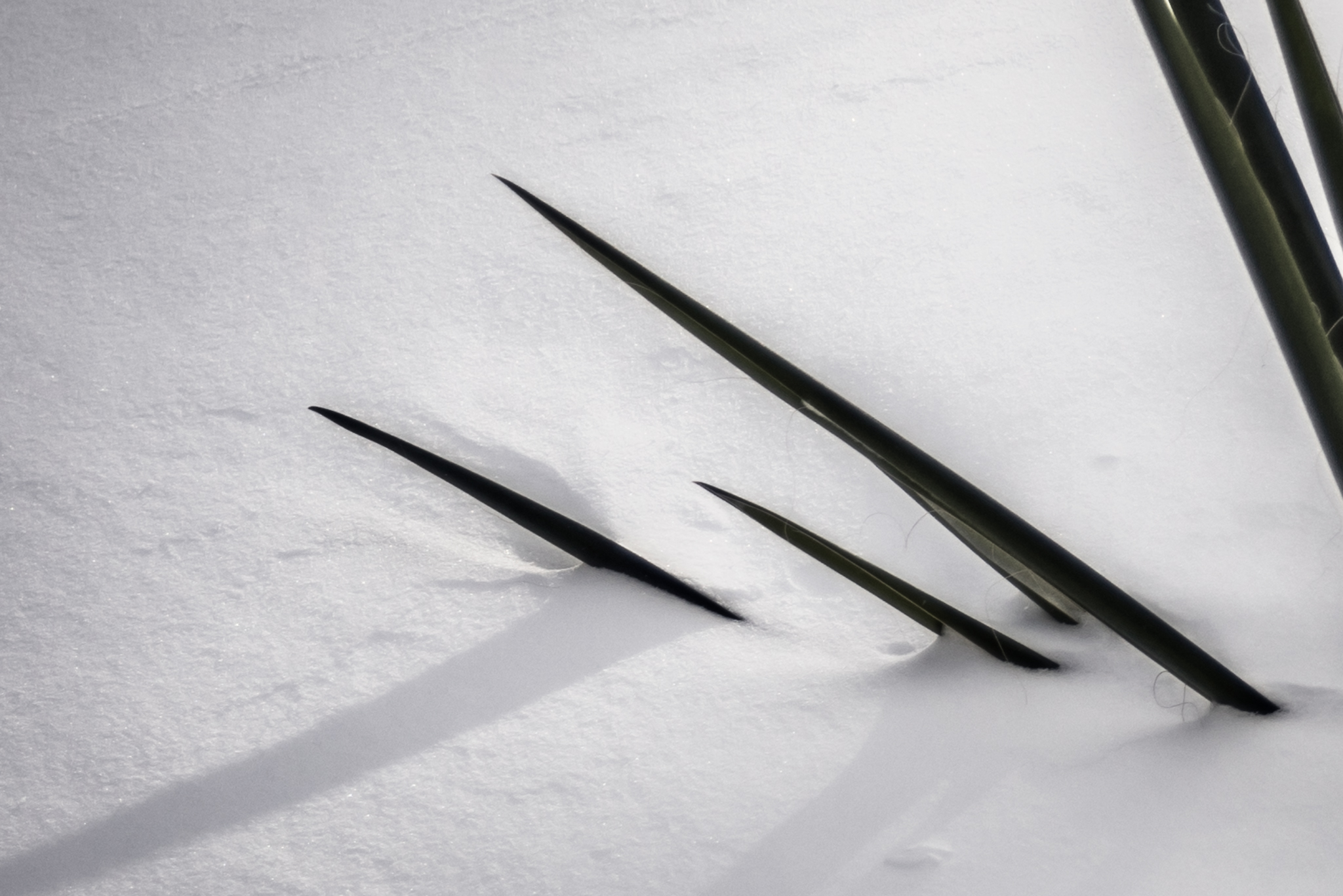
Cold. Sharp. Buried.
Winter offers my creative eye the unusual pairing of cold hands and warm promises.
I can choose to hibernate, hiding my thoughts and burying emotions, or I can embrace the harsh reality of winter’s dormancy and explore the “frozen” side of my art.
And when I do, bravery is rewarded.
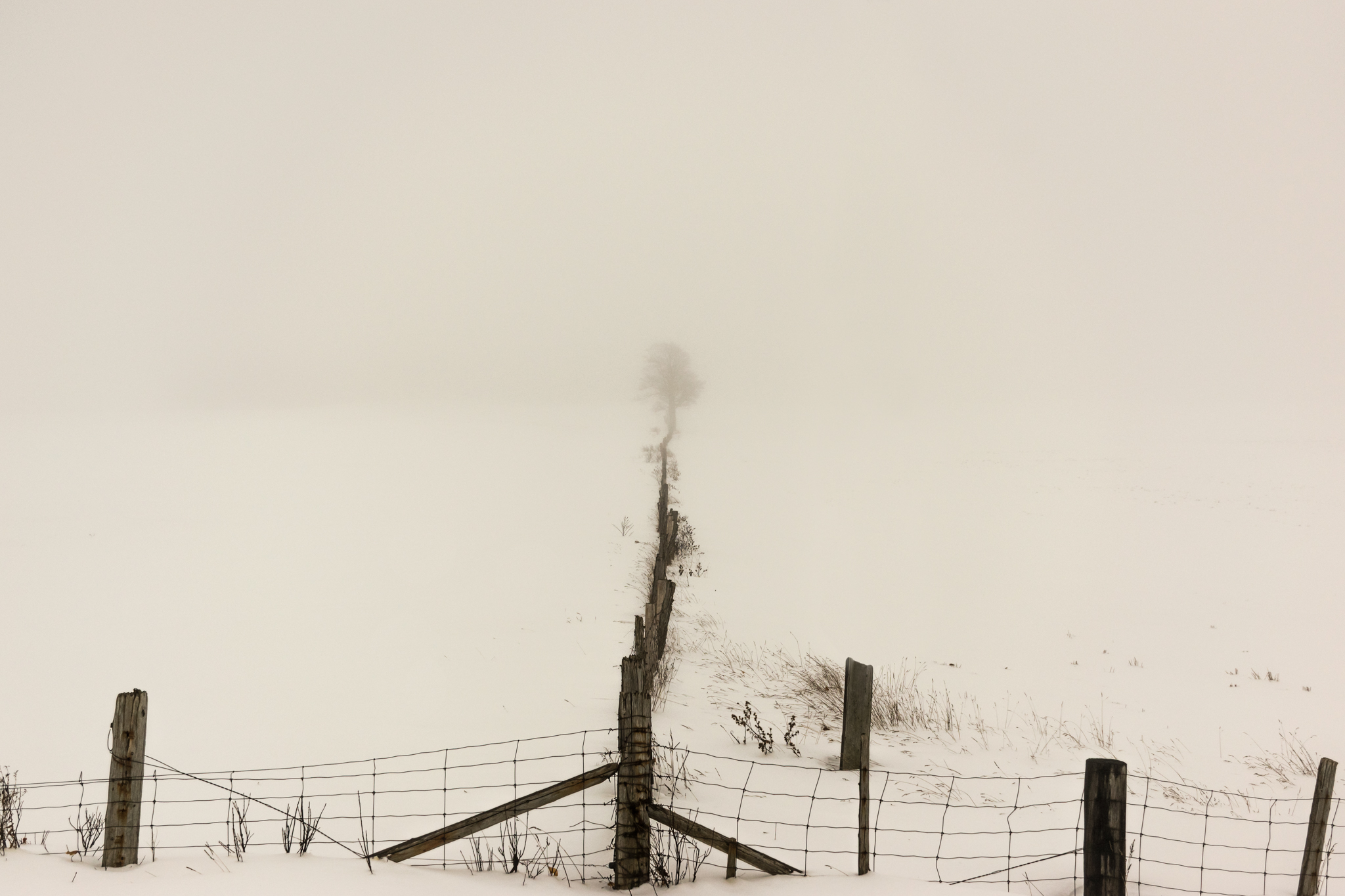
There is nothing more satisfying to me than to capture the harsh, silent mystery of winter.
I cherish the times when I can escape the dull dampness of this season in the city with its grey, barren streets and brown snowless lawns, and head to the country where a mantle of white blankets the land in undisturbed splendor.
I feel a deep connection to nature in those rural moments.
O, the wonder of winter.

Listen. Can you hear it? It’s the sound of soft snowflakes falling through the branches to the forest floor.
It’s the sound of silence.
O, the wonder of winter.

Even the mundane can be beautiful if I take the time to see it while rushing from the car into the house.
My life is reflected in the tracks I leave behind in the snow (or the mud, pine needles and concrete I walk upon).
O, the wonder of winter.
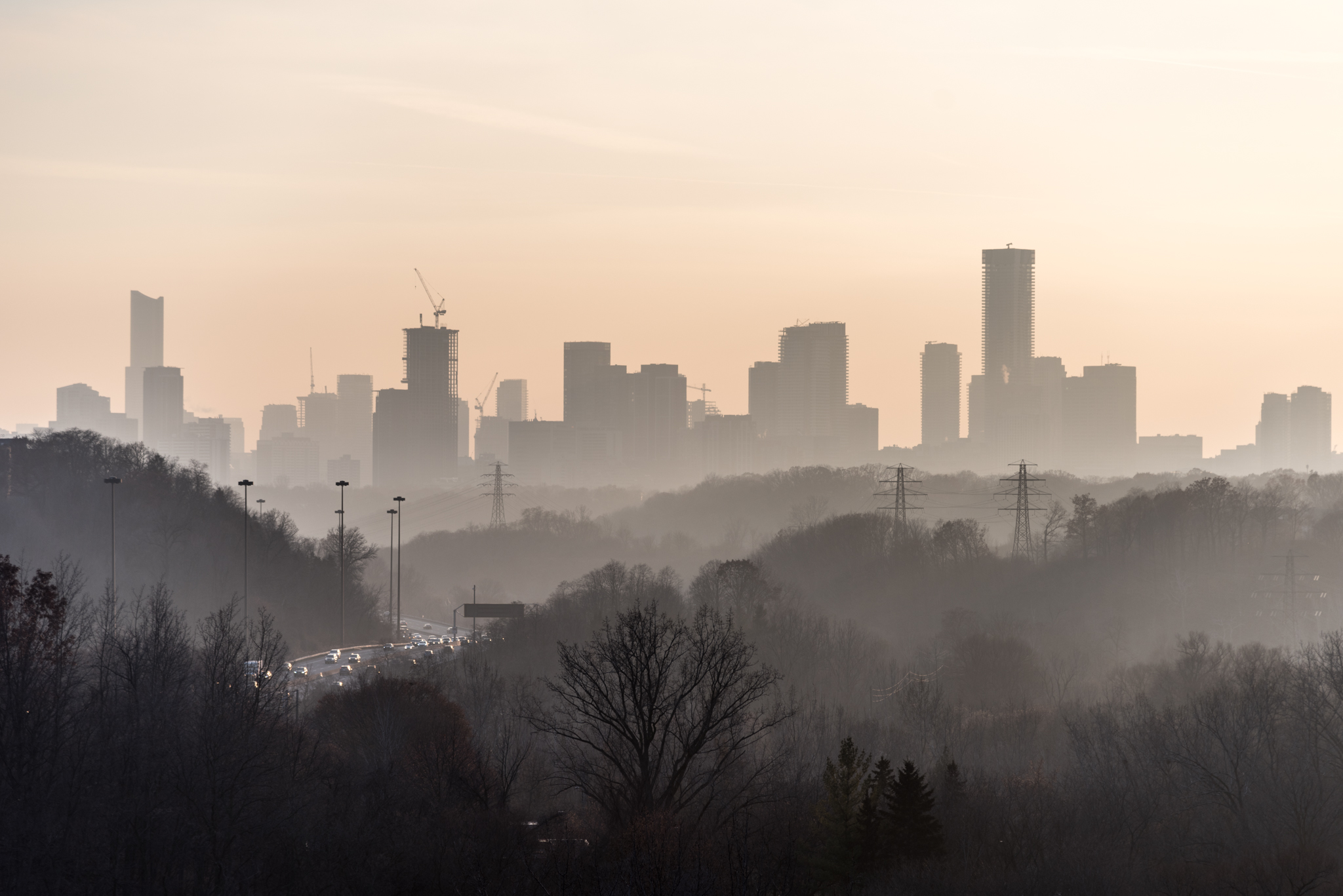
There are, however, those moments in my winter of discontent when the city calls to me saying, “Come, David. Come capture the folly of fog as it settles across the valley in December.”
Bare trees. Black towers. Bleak expanse.
But how sublime is the subtlety of the pink sky born from the setting sun.
O, the wonder of winter.

And then the moment that makes it all worthwhile.
While I stand on an overpass freezing my butt off, having just taken that previous photo of the skyline, I spot something in the darkness below me.
The sun is at the perfect angle to reflect off the train tracks that run through the valley. Amidst the mist in the mystical forest emerge two filaments of light.
O, the wonder of winter.

Winter is poetry.
Ice is art.
Cold and darkness reveal light and playfulness.

Mother Nature provides sensual scenes for those willing to witness.

Sometimes it’s in your own backyard.
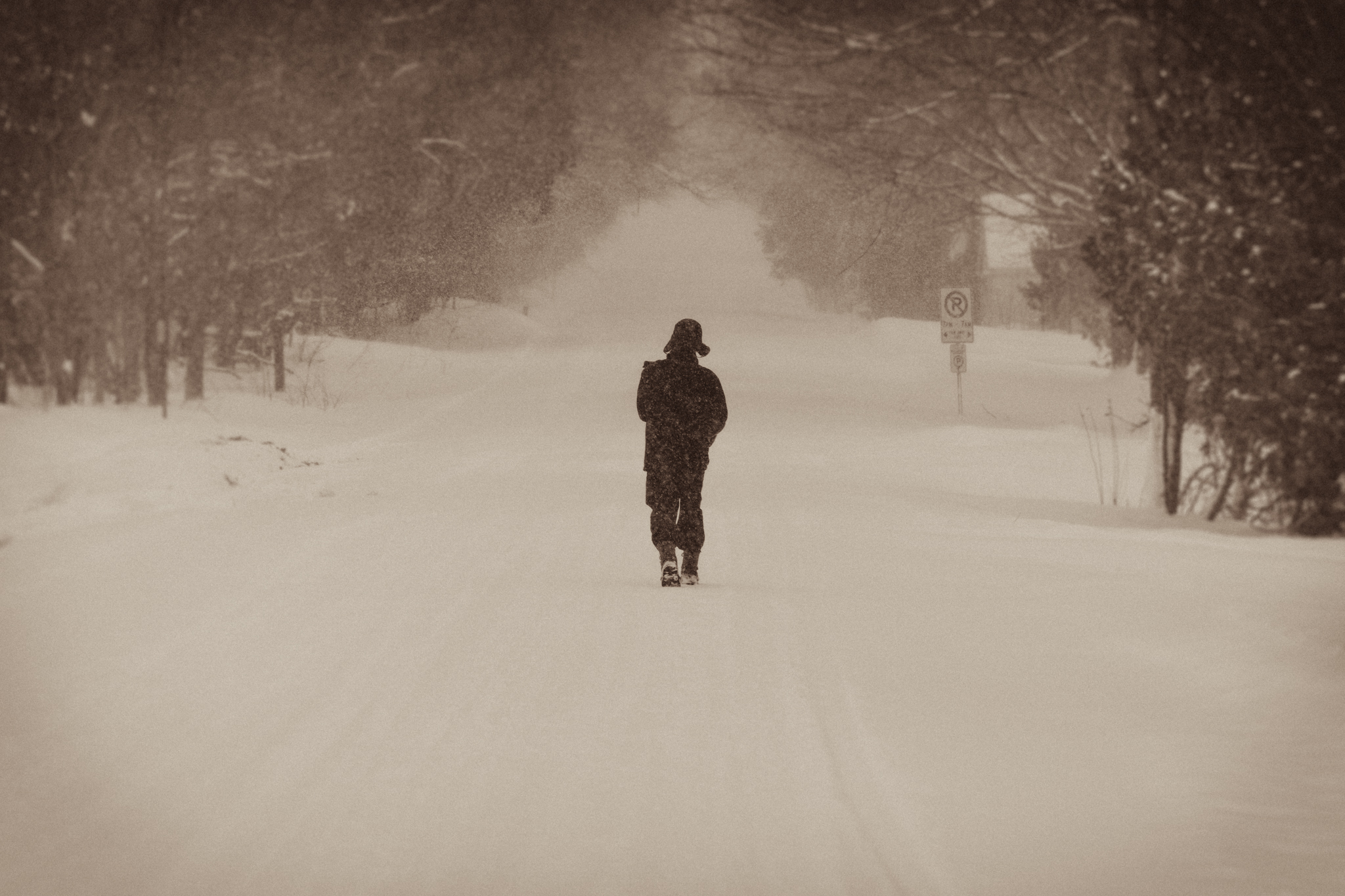
Sometimes it’s just down the road.

But always, the magic is there for you to capture in all its magnificence.
O, the wonder of winter.
David’s photographs and words can be found on his website, or visit him on Instagram and Facebook.
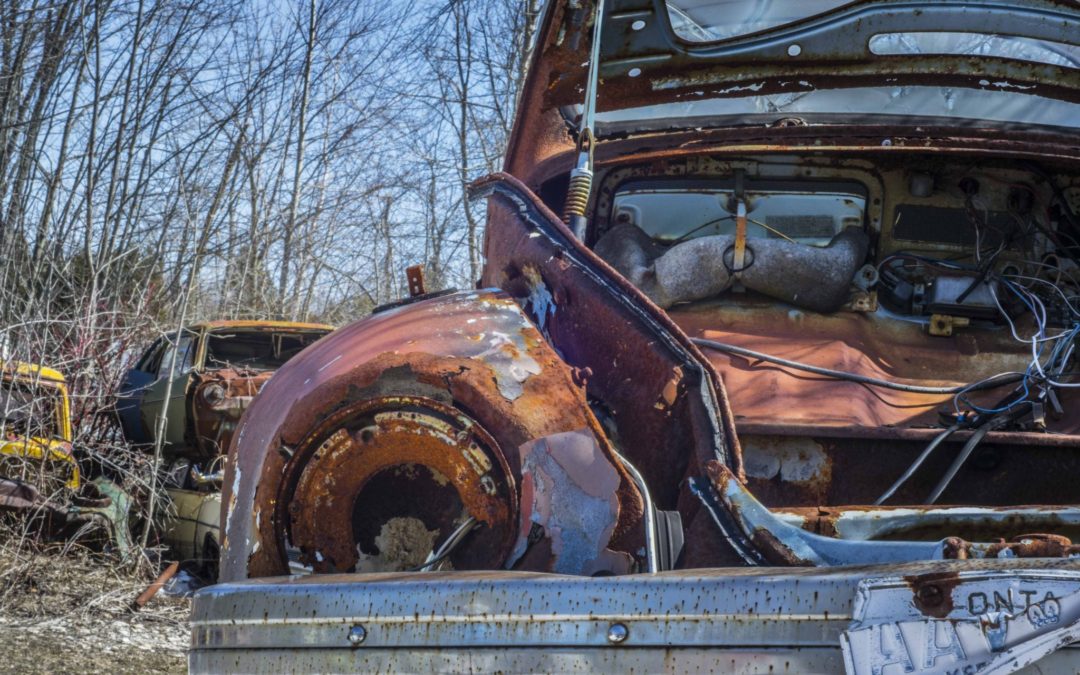
by David Brandy | Nov 21, 2017 | David Brandy, Stories
My love for photography turned to rust, quite literally, on April 6, 2014.
I remember the moment well. It was mid-morning on a frosty Sunday and I was standing on a muddy driveway that led toward McLean’s Auto Wreckers in Rockwood, Ontario, about an hour northwest of Toronto. McLean’s has become somewhat of a Mecca for photographers who can’t get enough of that perfect blend of light and rust.
This was my first intentional photo shoot – an initial attempt to create a series of images based on a singular subject. It was also the first time I had ventured out with a group of fellow photographers I didn’t even know.
Given it was April, the hectares of automotive carcasses I was about to immerse myself in were still knee-deep in snow. The challenges didn’t stop there. It was also a brilliant sunny day that made for tough light conditions for even the most experienced shooter.
The group started walking through the fields and I couldn’t wait to see what I would find.

I didn’t have to walk far to discover this adorable robotic creature keeping watch over an old construction tractor. I thought I heard it say, “Go ahead, I dare ya, take your best shot!”
I couldn’t resist. All of its majestic pipes, rubber tubes, lights and peeling paint made me rise to the challenge. I was rewarded with a comical, quizzical look through its myopic eye. Beauty can be strange, and the strange can be beautiful.

I couldn’t walk ten feet without finding another tempting scene. This lengthy old trailer, when framed in this manner, reminded me of a giant caterpillar slinking its way through the frozen fields. Its iridescent yellows and oranges seemed to go on forever in harmony with its prevalent brown rust.
The magic of McLean’s was beginning to reveal itself. And I, the naïve, awestruck participant, couldn’t wait to discover what other painterly pleasures lay in wait.

And then…a fire truck. Every man-child’s dream!
All shiny chrome and faded red with its control levers and hose attachments intact. I must have shot nearly every angle I could of this beauty. Rusty and worn, but sitting there extremely proud of its glory days of fighting fires and saving lives. It knew it was the real hero of the junkyard and I knew I had to preserve, through my lens, its heroic gifts.


I trekked for a while through a small grove of cedar trees. When I emerged out the other side, I came upon a field full of VW carcasses. I found a gutted Beetle that, immediately upon seeing it, took me back to when I was 16 years old and learning to drive in my mother’s 1963 VW Beetle. I recalled with fondness the graphic on the slide-out ashtray that helped me immensely as a new driver because it showed you the correct placement of the stick shift for each of the forward gears and reverse.

Junkyards, like photographs, are full of magnificent memories. Seeing, smelling and touching this “old folks’ wagon” took me right back to driving up north on the highway on a warm summer’s day, listening, for the very first time, to Pink Floyd’s Dark Side of the Moon in its entirety on the 8-track player I had installed in our Beetle. And then I shivered as I remembered scraping the layer of wintery frost from the inside of the windshield that would build up while driving home after a day of downhill skiing!
The irony for me in finding this Beetle lay in the fact that the year stamped on the Ontario license plate was 1973, the same year I was 16 years old and experiencing all these distant memories. Coincidence? Perhaps. I like to believe it was fate.

Mother Nature shows herself as a powerful creative force when she sets her mind to working on man-made objects of steel coated in layers of paint. She’s a true artist. Her medium is rust. Her palette is the rainbow.

It may take her years to complete, but if you’re lucky enough to catch a glimpse of her work along the way, it can have a profound effect on your soul.

Which brings me to my favourite shot of that day in the junkyard. The back left taillight of this utility trailer, surrounded by an irresistible exhibition of colour and corrosion. I like to believe that I came upon this particular work by Mother Nature at its peak; the peeling yellow and blue paint, the streaking orange stains, the all-knowing, all-seeing red lens framed by rusty pockmarked steel. Painterly perfection! Incidentally, this image was the very first photography that I sold in a gallery. It may have had my name on it, but Mother Nature gets all the credit.
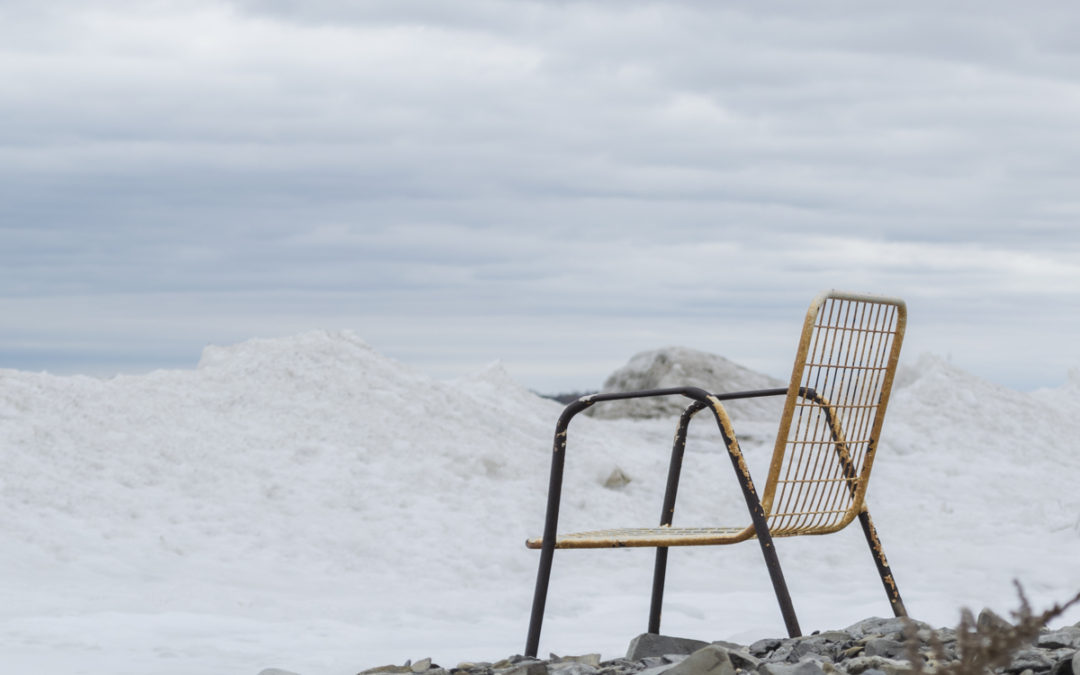
by David Brandy | Jul 3, 2017 | David Brandy, Still Life, Stories, Storyteller, You Are Grryo
What you are about to read are disparate and fictional short stories I have written to coincide with images that are part of a series of photographs of mine entitled “Empty Seats”. The series embraces the enigma of everyday objects that are specifically created by and for human beings, yet they are filled with emptiness, loneliness and a longing for human presence…

Alone and abandoned, the once proud turquoise chair finds itself frozen by the side of the road. Mere hours earlier the chair had enjoyed a life of abandoned inclusion in the warm garage of a lakeside vacation home owned by a caring family. Strategically placed next to the riding mower and directly across from the red 10-drawer tool chest, this once elegant and much sought after chaise was complacently secure in its retirement inside the cozy dry garage.
On a frigid January day with no forewarning, the teenage children from the family burst into the garage with orders to clean it out. One by one, the familiar items in the garage were carted out by the teens and left indignantly at the end of the driveway in a heap of despair. When the eldest daughter picked up the turquoise chair, it knew the end was near and its destiny would be on top of the heap on the driveway to await a final resting place in the local landfill. But all of a sudden the girl walked across the driveway to the side of the icy road in front of the property and plunked the chair into the snow bank.
Alone and facing the elements for the first time in its storied life, the chair sunk into the wet, damp snow and sighed a deep, remorseful sigh, knowing that for now it had been saved from imminent death, but, that from this moment forward, life as it had known it would succumb to a daily ritual of growing rot, mold and mildew. The horror. The horror.

William sat alone mourning his dead wife for nearly an hour. Looking up, he realized that every person who had come to witness the burial had vanished. Suddenly he felt the weight of knowing that he was truly alone now for the first time in 36 years. He rose sobbing and walked away, leaving behind a hard damp bench, a haunting headstone and the cold lifeless body of his beloved Jacqueline, now six feet under ground.

It was not always an “art piece”.
It first held court upon the front deck of a beautiful cottage situated high above a lake. Sturdy and strong with a brilliant coating of white paint, it beckoned family members and newcomers alike to sit in comfort on its reclining seat with big wide arm rests and gaze upon the magnificent view.
But time and the elements are not kind to a Muskoka chair. Today it sits on the slope that faces the lake below the cottage deck. It is in the perfect spot to be seen by those passing by in a boat or lazing carefree on the dock.
This chair comes from a strong breed. In its retirement it may be willing to sit alone in the cool shade of a Hemlock tree all summer or hibernate throughout the winter under a blanket of snow, but it is far from the end of its life. It can no longer support the full weight of today’s generation of cottage-goers, but it can support the weight of their fond memories.
After all, art is all about memories.

Derek forgot his raincoat and gloves – again!
This is a frequent occurrence – too frequent. In fact, Derek has been forgetting a lot of things lately. His doctor has hinted at early-onset dementia. But at 53 years old, Derek doesn’t want to hear about such things. After all, as he said to his doctor, “I have a wife and two daughters to take care of for Christ’s sake!”
Derek has worked at the scrap iron yard since he was 18 years old. He never saw the point in going to university. He wanted to start making money at an honest job right out of high school.
Eating his lunch at the company picnic table every day for 35 years is one of the small pleasures in Derek’s life. He loves to sit out there rain or shine. It makes him feel alive. If he happened to have left his raincoat on the bench again, so be it. He’ll grab it tomorrow, if he remembers.
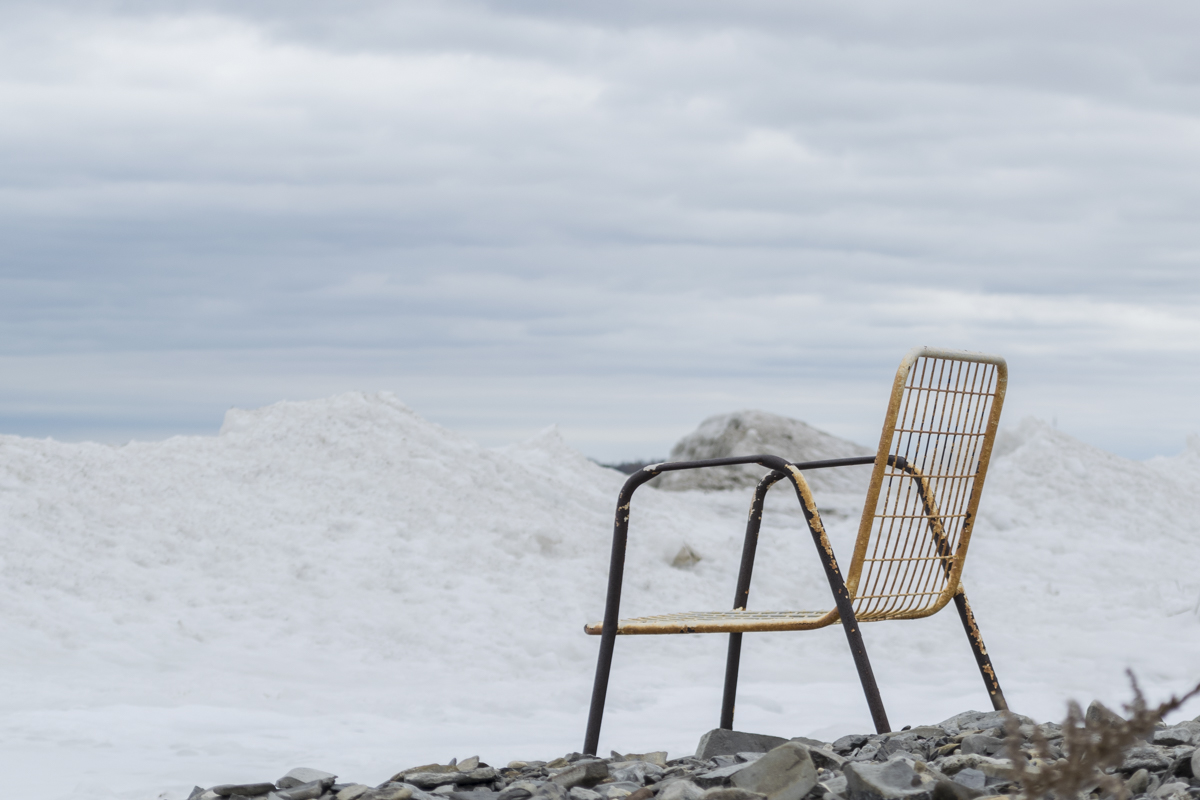
Nathalie came upon this oddly placed chair on a brisk winter’s day. It was just sitting there upon the rocks inviting her to take a break from walking her dog. “How wonderful,” Nathalie thought. “I could use a short rest.”
Nathalie sat down on the cold steel bars of the chair. At first it was a welcome respite. “Life is good,” she said out loud for no one to hear. The view was spectacular. Large ice dunes had formed along the beach and provided a scenic panorama. The sky was painterly in its glorious blue-gray striations. The air was fresh and clear. No sound could be heard except the lapping of the waves under the ice and the breathing of her tired old dog.
Then the cold hard reality hit her. A pair of thin blue jeans was the only thing that separated Nathalie’s butt from the cold hard steel. Immediately her respite was interrupted as she realized her moment of Zen was going to leave a mark!
Hoping no one was watching, she rubbed her hands across the ridges of the grid-like imprint on her frozen behind. She called her dog and briskly walked toward her car, murmuring under her breath, “Damn winter!”

Drenched and near death, men, women and children from a land far away washed up on the shore one by one, clinging to their precious life rings. Stumbling upon the beach they realized they had survived their flight from genocide in their homeland and that they were now miraculously safe.
Many of their friends and family members were not so lucky. They were not able to find a life ring to cling to as their small boat capsized in the stormy and frigid water. They were now lost forever.
The survivors who made it to this desolate beach took a moment to stack their “life” rings next to the empty benches on the frozen sand. They created a makeshift memorial to honour those who died trying to reach freedom. For this exhausted and frightened group of refugees it was of paramount importance in their dire moment of survival to somehow pay tribute to their lost loved ones.
They turned and walked away into the warm and open arms of those who would help them begin a new life in a new land.

The greatest Luchador in all of Mexico has hung up his mask. He was always a bit of a swinger.

The train came to a stop at Broadview Station. When the man sitting across from me got up to leave the train he crumpled up the newspaper he was reading and dropped it on the floor. As the man exited the train, I noticed the word “hate” in the headline on the page facing me.
“You know what I hate?” I thought. “I hate litter!”
No, wait, I hate the act of people littering. Yes, “hate” is a strong word. In my opinion those who litter deserve to have a strong word thrown at them.
Subway litter. Roadside litter. Sidewalk litter. Litter in the countryside. Litter on the beach. Litter in our lakes, rivers and oceans.
Today litter is everywhere on this Earth and it’s repugnant to me. It’s the ultimate sign of utter laziness in a human being. And it’s ignorant as well. The person who litters is blatantly saying, “I don’t give a crap about this Earth.”
Well I do give a crap about our Earth. I care deeply about stewardship and preserving the only land and water we have to live upon. We are choking it and I don’t believe it can come up for air any longer without some emergency measures. We need to release the Earth from the chokeholds of litter and pollution.
We need to “hate” litter and the actions of those who create it.

I was walking through my neighbourhood park that contains one lone blue bench. I saw a photographer hurrying to set up his camera and tripod across from the bench, as the sky grew ever darker with ominous storm clouds overhead.
Two teenage boys came walking across the park toward the bench, unseen by the photographer who was looking through his viewfinder.
The two boys looked to be up to no good, so I hung close by in case there was trouble brewing. They approached the photographer and one of them said, “Hey dude, you gonna be long ‘cause we wanna sit on the bench?”
The photographer looked up and said, “Just give me ten minutes please. I drove for an hour to get here to get this shot.”
“Are you kidding me?” the boy said. “You drove an hour to take a picture of that!”
“Ya, I did.” said the photographer.
“What a waste of time.” the boy replied.
I laughed out loud and walked away as the photographer hurried to get his shots. The boys wandered off to sit on a large boulder in the park and as I walked past them they lit up a joint. I turned to look back when I heard the photographer shout to the boys, “It’s all yours now guys.”
The boys never moved off the rock.

He had been officially “homeless” for nearly a year. This outdoor encampment perched next to an abandoned railway track was his “home” now. It contains a tarp to sleep under, a cane chair, an end table and a tiny garden with kitschy decorations.
His kingdom is deliberately designed and immaculately ingenious. The squatter got up out of the chair, grabbed one of the many pairs of work gloves he had collected and walked away.
Off he went to who-knows-where. But one thing is certain. He has a place to come home to, be it ever so humble.

Where do lifeguards go in winter?
Do they fly south? Maybe they go work at a tanning salon. Or perhaps they just find an indoor pool to guard.
These brave souls whose job it is to protect us frolicking sunbathers, suddenly vanish in September not to be seen again for another nine months.
Where DO lifeguards go in winter? It’s surely one of life’s guarded mysteries.
My photographs and words can be found at:
www.davidbrandyphotography.com
Instagram: @davidbrandyphotography
Twitter: @dbrandyphoto
FaceBook: www.facebook.com/davidbrandyphotography



































